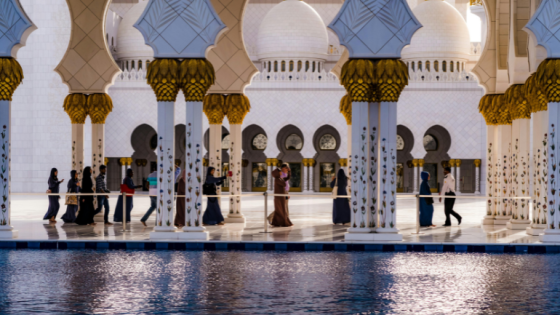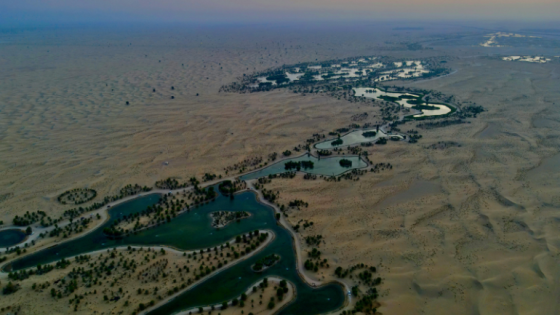Contents
- 1 UAE Architecture in Dubai
- 2 UAE Architecture of Arabic Heritage
- 3 Spiritual Religious Architecture in the UAE
- 4 Dubai’s Architectural Sights
- 5 World’s Longest Cantilever Skyscraper in Dubai
- 6 Adaptive Architecture at Sharjah Architecture Triennial from the Global South
- 7 The Architecture-Related at COP28: Decarburization & Regional Solutions
- 8 Tadao Ando Design for New Performing Arts Center in Sharjah
- 9 Vernacular Architecture in the UAE
- 10 Islamic Vernacular Architecture
- 11 UAE Vernacular Architecture Elements
- 12 Vernacular Structure in the UAE
- 13 Modern Vernacular Architecture in the UAE
- 14 Future of UAE Vernacular Architecture
Visitors’ minds are frequently caught by UAE architecture. While many people are unfamiliar with Arabian wind towers or courtyard dwellings, they have heard of the massive sail-shaped Burj Al Arab, the indoor ski resort Ski Dubai, and the world’s tallest building, the Burj Khalifa, previously known as the Burj Dubai. When the World Trade Center was built in 1979, it was the only skyscraper in an otherwise desolate desert.
Many were perplexed about why a high-rise was constructed in the still-sleepy town. Even as late as 1990, most of Sheikh Zayed Road was an empty sandpit. Today, however, the World Trade Center appears ancient compared to the modern and contemporary architecture of the United Arab Emirates, spreading as far as the evolution of architecture in the UAE.
Read more: UAE Green Spaces; Nurturing Nature Amidst Urban Landscapes
UAE Architecture in Dubai
In the late nineteenth century, Iranian, Indian, and Islamic designs impacted Dubai’s initial architecture. The hot and humid climate, the residents’ religious and social conventions, and the availability of construction materials were all crucial factors in determining architectural styles. The essential qualities were simplicity, functionality, longevity, and climate adaptability—early constructions comprised stone, palm fronds, and palm tree trunks, with mud replacing mortar.
Most of Dubai’s early residents lived in baristas, huts built of palm fronds. Later, the most durable accessible materials, coral stone from the sea and gypsum from the creek’s salt marshes, were utilised for the emirate’s four main structures: watchtowers, mosques, souks, and dwellings. The Islamic emphasis on solitude and modesty influenced the construction of courtyard homes, many of which were connected to wind turbines for cooling in the summer. Buildings were constructed close together to create sheltered and breezy pedestrian pathways.
Dubai’s oil discovery triggered an unforeseen development boom, resulting in various architectural styles. Construction frequently ignored traditional Islamic design or the environment, and Dubai was not yet attempting to capture the world’s attention by building the biggest and best. Many glass towers were built, requiring massive amounts of electricity to stay cold.
Read more: UAE Oasis Locations; Desert Oasis Al Ain Oasis Liwa Oasis locations oases in the UAE
UAE Architecture of Arabic Heritage
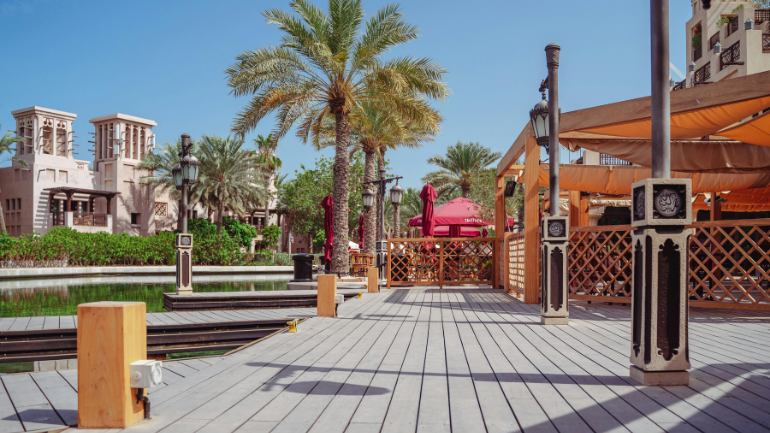
In recent years, builders have been increasingly concerned with the environment and Arabic heritage. Master planning controlled by Dubai’s leadership is resulting in more peaceful growth. The most efficient heat-resistant materials are increasingly employed in buildings, and more architects are adopting classic designs. Madinat Jumeirah is a fantastic example of a modern construction that celebrates Arabian culture. Dubai’s government are also making a concerted effort to preserve the emirate’s architectural heritage, restoring the Bastakiya ancient area near the creek and establishing museums and cultural centres to remember Dubai’s early architecture.
Read more: UAE Sand Dunes; Liwa Desert sand dune in Abu Dhabi & Dune Bashing in Dubai
Spiritual Religious Architecture in the UAE
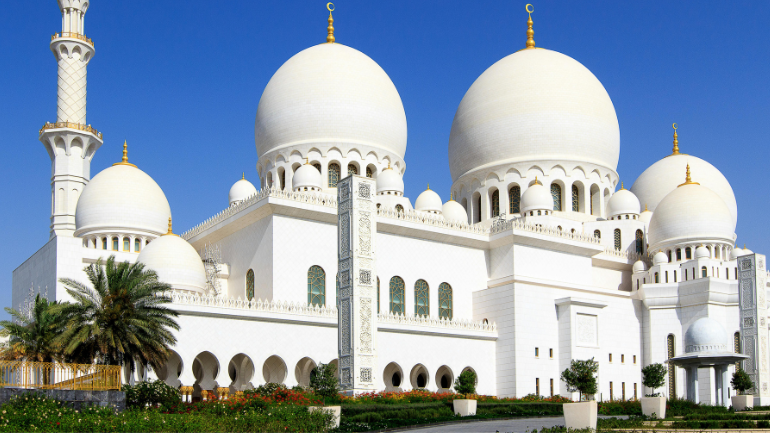
could always transcend the physical world, bringing visitors on a spiritual journey. Many belief systems regard it as a gap between the earthly and the universal divine. Various options can frequently support this created experience, with light, form, materiality, and circulation all playing essential roles. Furthermore, architecture and design have the potential to influence one’s spiritual experience profoundly.
Read more: UAE Mangrove Forests; National mangroves forest in Emirates Dubai, Abu Dhabi
Dubai’s Architectural Sights
Dubai’s architecture is diverse and innovative. Here are Dubai’s Most fascinating architectural sights:
Burj Al Arab
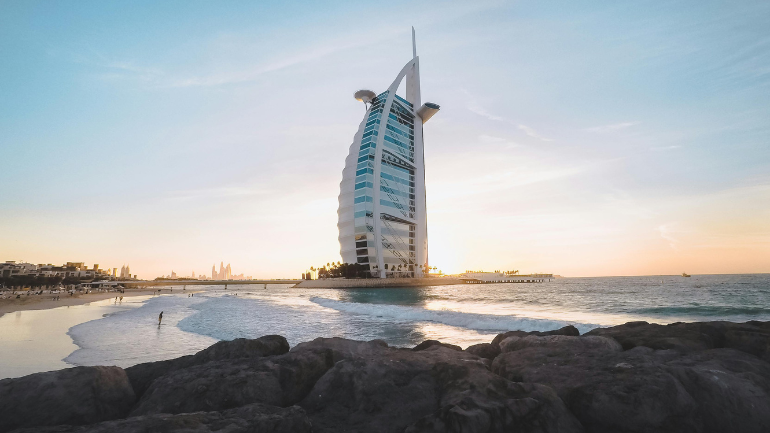
The huge Burj Al Arab, which translates to “Arabian Tower,” was designed by architect Tom Wright to mimic the billowing sail of an Arabian dhow. It rises 321 meters (1,053 feet) into the sky. The famous building, which rises from a man-made island, dominates the Jumeirah Beach coastline, dwarfing the wave-shaped Jumeirah Beach Hotel just in front.
The Burj is constructed with a steel frame exterior wrapped around a concrete tower, with white Teflon-coated fibreglass producing the building’s white “sail.” At night, the Burj is illuminated with a magnificent changing colour display. A helicopter pad and a glass-enclosed restaurant extend from the top. The pricey hotel has the world’s most enormous atrium, and the sumptuous interior design contains 8,000 square meters (86,111 square feet) of 22-carat gold leaf.
Burj Khalifa
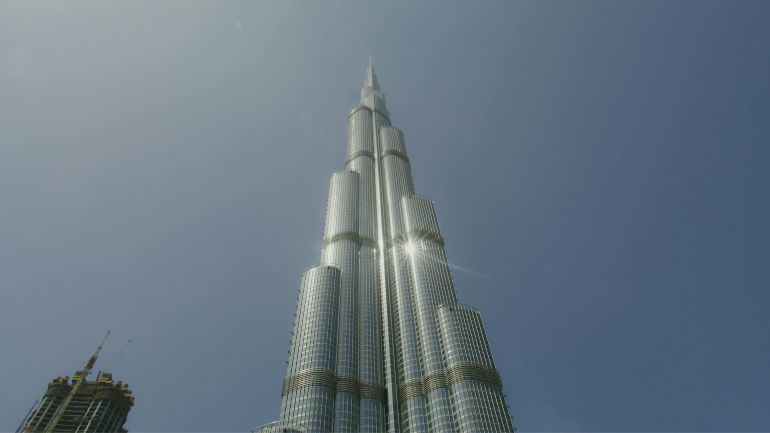
Burj Khalifa, the world’s tallest building, was inaugurated in January 2010. Its slender silver steel construction dominates the skyline and can be seen for miles. Its height exceeds 800 meters (2,625 feet), with 160 storeys. The 124th level houses an observation deck known as The Top. Lead architect Adrian Smith of Skidmore, Owings, and Merrill drew inspiration from traditional Islamic architecture, which features tiered rising spirals. The tower rises from a flower-shaped foundation, with the blossom representing the hymenocallis, a white lily grown in the nearby desert.
The skyscraper, the world’s highest free-standing construction, is reported to have cost more than $4 billion. In addition to luxury apartments and office space, it features one of the first Armani hotels. The skyscraper is the focal point of the adjacent “Downtown Dubai” residential and entertainment complex, which includes the Dubai Mall, the Address Hotel, and The Palace – Old Town. There are over 1,200 retailers, 150 restaurants, the Dubai Fountains, an ice rink, cinemas, an aquarium, and a wide range of entertainment activities for families and children.
Al Bastakiya
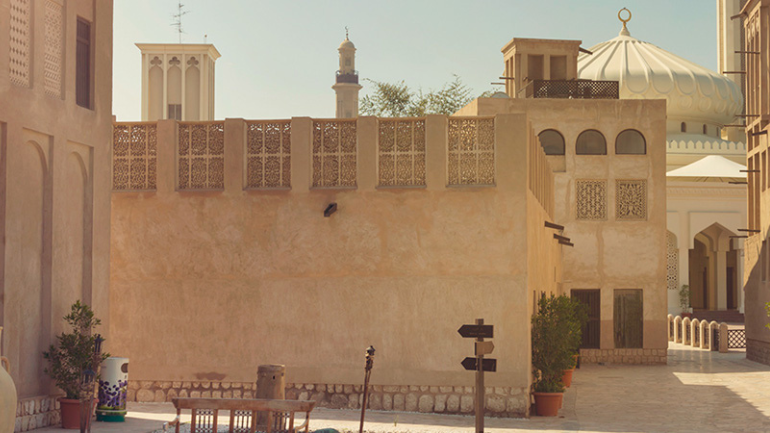
This architectural historical site restores one of Dubai’s oldest communities, where affluent Persian merchants settled in the late nineteenth century. The buildings are historic, yet the spotless quarter appears spanking new. You may stroll down meandering alleyways, view classic Gulf courtyard houses with hand-carved wooden doors, and admire the elaborate wind towers used for cooling in the days before air conditioning.
The coral stone and cement wind towers, distinguished by double or triple wind openings, arched ends, and stepped recesses, originally lined the Dubai Creek and cooled the apartments using sophisticated air-current systems that ran from the wind towers to the floors underneath. Bastakiya also features a museum, cultural centre, restaurants, and a heritage hotel with an art gallery. The Al Fahidi Fort, now the Dubai Museum, was completed in 1799 and is the city’s oldest surviving structure.
The Islands
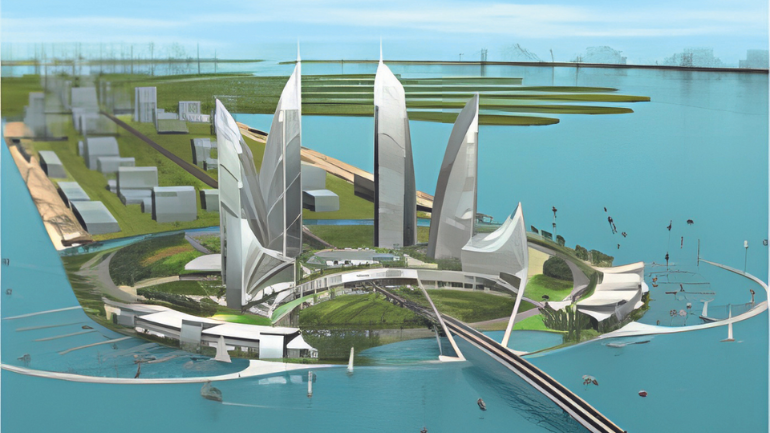
The world’s largest artificial islands are off the coast of Dubai in the Gulf. Some consider the Palm Islands to be the eighth wonder of the world. This triangle of islands, developed by Nakheel Properties in the United Arab Emirates, includes Palm Jumeirah, Palm Deira, and Palm Jebel Ali. However, only the Palm Jumeirah is complete, and the others have been delayed – some say indefinitely – due to Nakheel’s debt troubles. The islands, made of hundreds of millions of cubic meters of reclaimed soil from the Gulf’s bottom, are each constructed in the style of a palm tree with a trunk, fronds, and crescent, adding 520 kilometres (323 miles) of shoreline to Dubai.
The Palm Jumeirah consists of a 2km (1 1/4-mile) “trunk,” 17 fronds, and an 11km (7-mile) crescent that surrounds the island, forming a breakwater. Many residents have relocated to luxury villas and flats, and dozens of coastal hotels are planned. The Atlantis Resort, along with Aquaventure, Dolphin Bay, and The Lost Chambers, debuted at the peak of the island’s crescent in late 2008. A high-tech monorail connects the island’s base to the crescent.
The Palm Jebel Ali and Palm Deira, intended to be much larger than the first island, are currently under development and will take at least another decade to finish. Bridges connect the islands to the mainland, each expected to host multimillion-dollar mansions, luxury condos, private marinas, and shopping and entertainment centres. Environmentalists are concerned about the impact on adjacent marine environments, and the massive Palm Island developments have undoubtedly impacted the ecology.
The other major island project, “The World,” has been postponed indefinitely due to financial issues. It was meant to be a network of 300 man-made islands 4 kilometres (2 1/2 miles) off the coast of Dubai, surrounded by an oval barrier and arranged in a map format. It was developed by the same struggling UAE developer, Nakheel Properties, and cost approximately $14 billion. Each island ranges from 23,000 to 84,000 square meters (247,569-904,168 square feet), separated by 50 to 100 meters (164 to 328 feet) of water. Much of the groundwork has already been completed.
Read more: The Ultimate Guide to the Best Dubai Brunch Places
World’s Longest Cantilever Skyscraper in Dubai
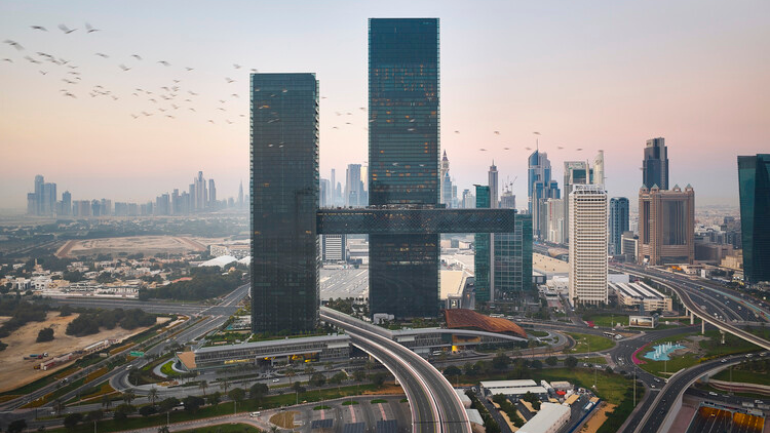
Nikken Sekkei, a Japanese design studio, has built a new structure in Dubai’s core financial area, including the “World’s Longest Cantilever,” which floats 100 meters above ground. “One Za’abeel,” which consists of two towers joined by an enclosed horizontal bridge, is a new entry point into the city. The project, designed to represent Dubai’s growth and expansion, provides convenient access to the downtown area. The project includes restaurants, retail areas, workplaces, and urban hotel rooms.
Read more: Dubai budget travel tips: How to Explore the City on a low cost
Adaptive Architecture at Sharjah Architecture Triennial from the Global South
The Sharjah Architecture Triennial, which began on November 11, 2023, and will end on March 10, 2024, serves as a metaphor for highlighting design and technical breakthroughs in the built environment, particularly in the global south. The exhibition includes works from 29 architects and studios from 25 nations. Building on Venice’s global platform for experimentation at the 18th International Architecture Exhibition, the 2023 Triennial takes a similar approach, making space for voices and discussions often overlooked in global exhibitions and revealing elements that have long existed but have gone unseen.
This second edition of the show, curated by Tosin Oshinowo, focuses on “The Beauty of Impermanence: An Architecture of Adaptability,” with a keen knowledge of both the global south and the global north, as well as an appreciation of the polarities between them.
Read more: UAE Culinary Culture; A Journey into Emirati Cuisine and Food Traditions
The Architecture-Related at COP28: Decarburization & Regional Solutions
The UN COP28 climate summit began on November 30, 2023, in Dubai, United Arab Emirates. The term refers to the UNFCCC’s Conference of the Parties and architecture-related topics such as decarburisation and regional solutions. It represents the yearly meeting of world leaders to devise methods to restrict the scope of climate change and its negative consequences. Last year’s conference closed with several critical steps, including establishing a worldwide fund to assist developing countries afflicted by climate disasters.
Read more: Heritage Museums in UAE: Cultural Journey Unveiled
Tadao Ando Design for New Performing Arts Center in Sharjah
Tadao Ando reveals designs for a new performing arts centre in Sharjah, UAE. Tadao Ando has unveiled designs for a new performing arts centre in Sharjah’s Aljada. “II Teatro” has 2000 seats. The theatre, which includes a gallery and an event area, will be a focal feature of the Aljada master plan. The theatre will be housed in the Naseej area and dedicated to art, culture, and design. There will also be a multi-layered cultural plaza. The scheme, created in conjunction with local developer Arada, is set to be completed in 2027 and will represent Tadao Ando’s architectural simplicity.
Vernacular Architecture in the UAE
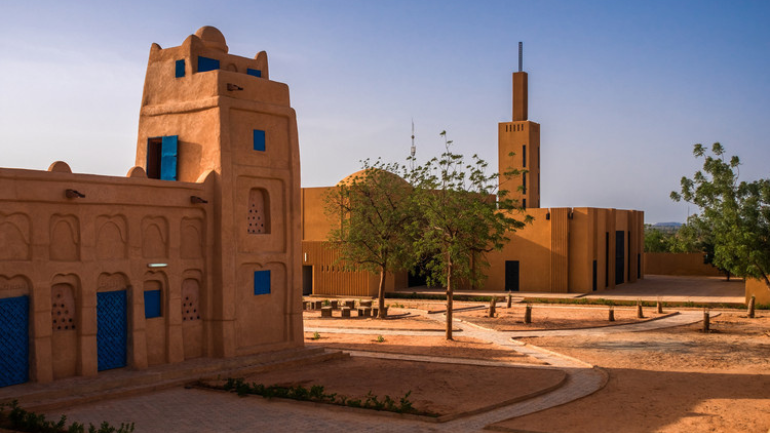
The United Arab Emirates, or UAE, is a melting pot of cultures. One of the most intriguing aspects of the UAE is its vernacular architecture, which reflects the diverse population that calls the country home. From the wind towers of Dubai to the coastal towns of the Northern Emirates, Vernacular architecture is abundant in the country.
“Vernacular architecture” refers to a style unique to a specific region or culture. The name “Vernacular” comes from the Latin root “vernaculus,” which means “local” or “domestic.” Vernacular architecture refers to the buildings and settings typical of a specific culture or location. Vernacular architecture is often functional rather than aesthetically beautiful, employing local materials and traditional construction processes. As a result, vernacular architecture is generally regarded as more authentic and less expensive than high-style buildings.
Islamic Vernacular Architecture
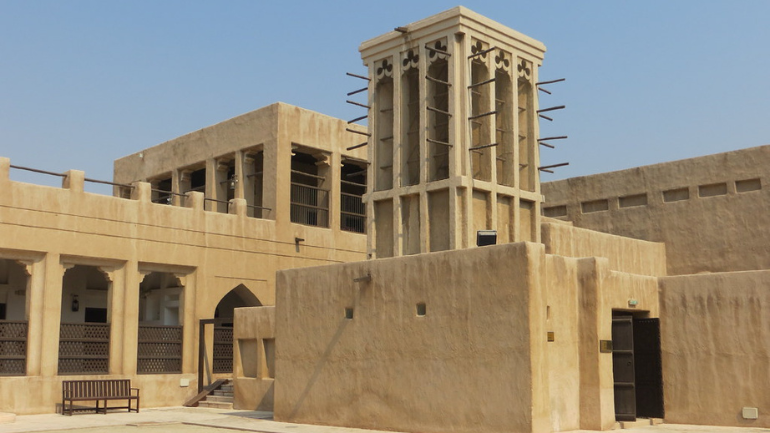
The United Arab Emirates has a long history of vernacular architecture, stretching back to pre-Islamic times. The use of traditional building materials and techniques distinguishes it. The UAE’s principal construction materials were sandstone, palm fronds, and coral. These materials were readily available and could be formed into any desired shape.
In the UAE, vernacular architecture featured Islamic influences such as arches, vaults, and domes. These elements were established during the Islamic period and gained popularity due to their aesthetic appeal and capacity to keep buildings cool in the hot desert climate. Vernacular buildings in the UAE are typically modest and practical, drawing inspiration from Islamic design principles prioritising utility over form. However, they are frequently embellished with exquisite decorations and designs that reflect the region’s rich cultural heritage.
While vernacular architecture in the UAE has been eclipsed by modern construction in recent years, there is a growing push to preserve and rejuvenate traditional building traditions. This endeavour protects the country’s unique architectural legacy while encouraging more sustainable building approaches sensitive to the local temperature and environment. Some examples of vernacular structures in the UAE include Qasr Al Hosn, Al Jahili Fort, Sheikh Saeed Al Maktoum House, Hatta Heritage Village, and Masdar Institute of Science and Technology.
Read more: Emirati Cultural Activities: Authentic Experiences
UAE Vernacular Architecture Elements
In the UAE, vernacular architecture can be found in traditional and contemporary buildings. Wind towers, or “Barjeels,” used to cool dwellings before air conditioning, are a defining feature of Emirati architecture. Barjeels are typically made of plaster and wood and have ornate carvings. Another vernacular element in traditional Emirati architecture is “Mashrabiya,” a latticework form covering windows and keeping homes cool.
Wind towers were utilised to cool homes and are still found in many Emirati villages.”Barastis” are little shelters made of palm fronds that provide shade from the sun and sand on the beach. Camel pens are commonly found alongside date palm fields.
Vernacular Structure in the UAE
There are numerous instances of vernacular architecture in the United Arab Emirates. These include wind towers that cool houses before air conditioning; “Barastis,” traditional thatched roofs constructed of palm fronds; and majlis, seating spaces where men would assemble to chat. Other examples of vernacular architecture in the UAE.
Dhow Homes
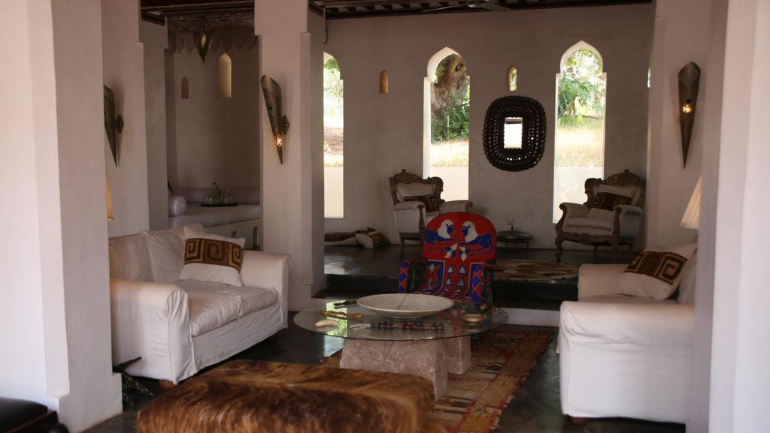
These are stilt cottages that fishermen have historically utilised.
Birkhat Al Barakah
These are modest cottages constructed in oasis settlements to give shelter to travellers.
Desert Camp
Bedouins utilise these temporary shelters made of fabric and wood while moving throughout the desert.
Read more: Sharjah Historical Places: Explore Timeless Wonders
Modern Vernacular Architecture in the UAE
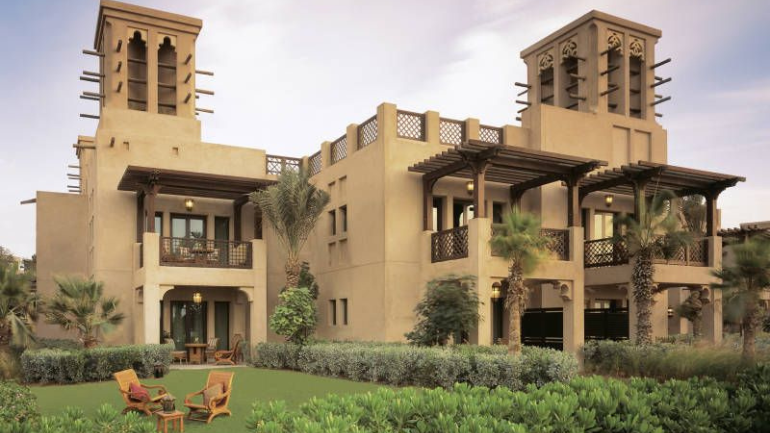
Vernacular characteristics in contemporary architecture. Utilise basic materials like coral and slate. Additionally, architects in the UAE are including “Mashrabiyas” and wind towers in their designs. These local elements instil a sense of place and originality in the architecture.
The UAE’s skyline has modern vernacular construction elements. The Burj Khalifa, for example, is the world’s tallest building and embodies Dubai’s modernity. Other examples of contemporary vernacular architecture in the UAE include skyscrapers, shopping malls, and luxury hotels. Vernacular architecture in the UAE is constantly adapted to reflect the country’s modern lifestyle. For example, many traditional buildings now have air conditioning and other modern amenities.
However, some vernacular architectural styles are still adopted in new construction, as seen in Dubai’s Business Bay sector, where several structures are intended to imitate wind turbines. Vernacular architecture in the UAE contributes to the country’s feeling of place and identity. It also promotes sustainable design, as historic building processes and materials are frequently more environmentally friendly than modern ones.
Future of UAE Vernacular Architecture
There is no single answer to the question of what the future holds for vernacular architecture in the UAE. The country constantly changes, with new developments and construction projects continually appearing. As a result, vernacular contemporary architecture is continuously developing, with new components emerging and old ones disappearing. However, it is conceivable to make some predictions regarding the future of vernacular architecture in the UAE. Classic construction materials such as sandstone and limestone will likely continue to be used. These materials have been employed for generations in the region to give structures a specific local flavour.
Another trend that will continue is using contemporary technology to design more energy-efficient buildings. The hot heat in the UAE necessitates air conditioning, yet it may be costly in terms of energy use. However, innovations in green building techniques enable the construction of energy-efficient homes and offices.
Finally, it is essential to note that vernacular architecture encompasses more than simply buildings, including landscaping and street furniture. There has been a growing interest in blending traditional Arabic patterns into public areas like parks and squares in recent years. This trend will likely continue as more people want to celebrate their cultural history via design.
Read more: UAE Natural Landmarks; Top 10 Beautiful natural attractions in Dubai, Abu Dhabi
Why is architecture in the UAE so famous?
The architecture of the UAE exemplifies a mix of old Islamic design ideas and contemporary architectural styles. This unique blend represents both cultural heritage preservation efforts and the use of cutting-edge technology to produce renowned landmarks like the Burj Khalifa and the Louvre Abu Dhabi.
What style of architecture is in Dubai?
While the architecture was initially traditional, Dubai’s modernist architecture incorporates creative exposed-glass walls, tiered rising spirals, and designs with subtle allusions to classic Arabic patterns.
What kind of houses are built in the UAE?
The UAE’s most popular real estate types are:
1. Tents and Sha’bi houses.
2. Compounds.
3. Bungalows, Villas and Townhouses.
4. Apartments, Penthouses and Duplexes.
5. Floors Instead of Apartments.
What is the oldest architecture in the UAE?
The circular constructions on the island of Ghagha are at least 8,500 years old, making them 500 years older than the previous owner.
What are UAE houses made of?
Even now, modern building materials are designed to look like they were created from mud and coral. However, they are all constructed from reinforced concrete.
What are the traditional houses in UAE called?
It is also known as the “traditional home” or “Late-Ottoman Arab home” in Haifa and the “Beiruti House” in Mersin. The 19th-century Levantine model of the three-arched house, with various regional variations, can be seen along the coasts of Lebanon, Syria, Palestine, Israel, and Turkey.
UAE Architecture is a blend of the best architecture and heritage of the UAE and showcases its history through its buildings and projects. From traditional structures in Abu Dhabi to Dubai’s original architecture, the United Arab Emirates continues to inspire with its architectural marvels.
